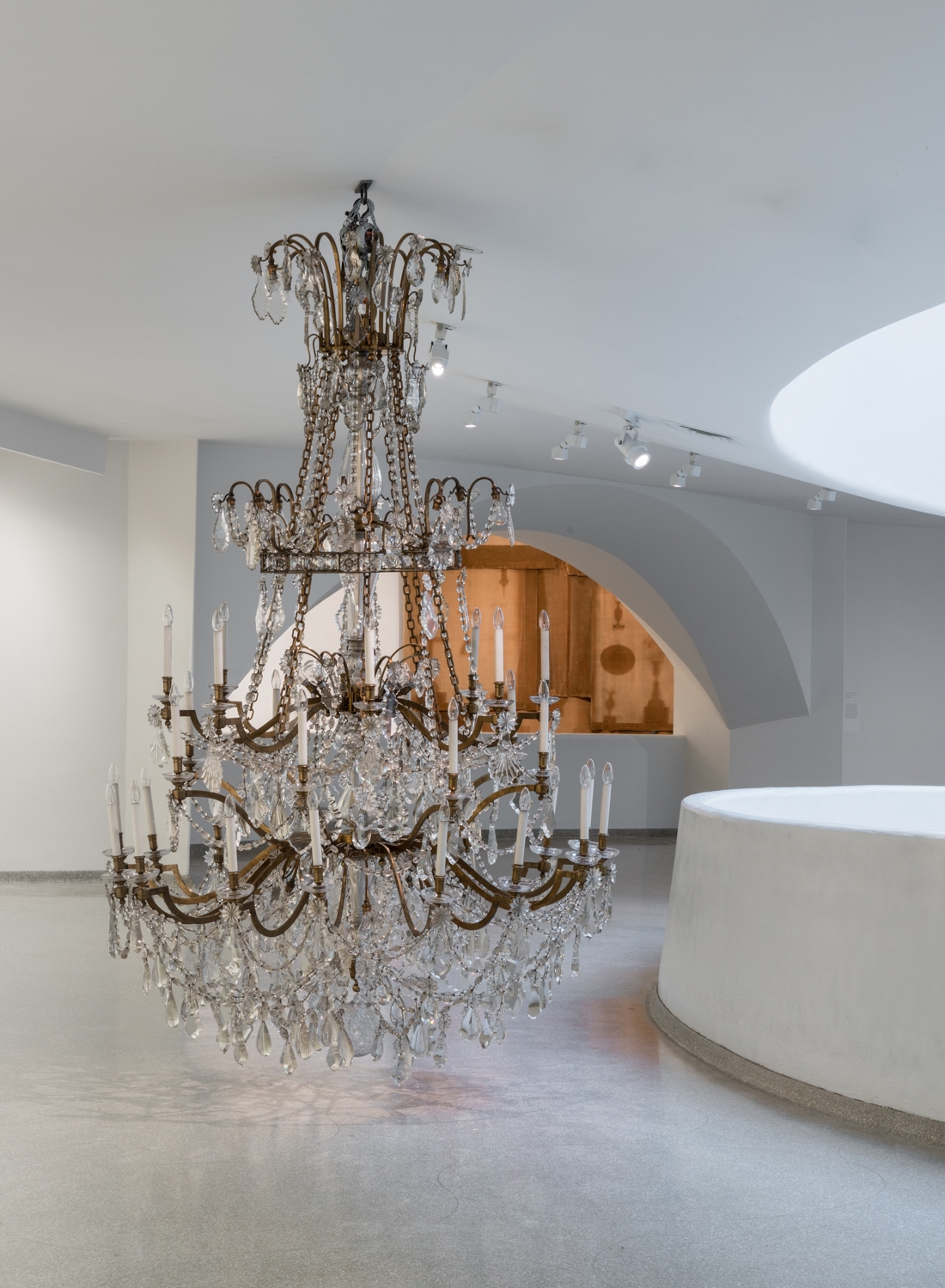In the opening gallery of Danh Vo’s retrospective sits the wooden skeleton of a chair. This is the stripped wooden frame of one of the two Chippendale-style armchairs on which John F. Kennedy and Robert McNamara sat when formulating their strategy in Vietnam, and which were gifted by Jackie to the secretary of defense after her husband’s murder. The sentimentalism of that gesture – and the chairs’ status as keepsakes of a fondly remembered time – jars with their implication in the horror resulting from the decision to escalate the US military campaign, to which these luxury furnishings were not only witnesses but (literally) supports. By stripping the chairs of their leather upholstery, which hangs like flayed skin on a nearby wall, Vo introduces the central theme of his 15-year career: the conflicting histories embodied, and functions served, by the objects we treasure.
The curved wall around the museum’s cavernous atrium is lined with framed letters from Henry Kissinger. In them he thanks the New York Post’s theatre critic for having supplied tickets to ballets, plays and musicals that he regrets being unable to attend because matters of foreign policy – the names Saigon, Ho Chi Minh and Cambodia are boastfully dropped – have detained him. Like Lot 20. Two Kennedy Administration Cabinet Room Chairs (2013), these historical artefacts were acquired at auction and are exhibited here on the assumption that their juxtaposition with works referencing Vo’s personal narrative (born in Vietnam in 1975, his family fled the country after the fall of Saigon and, after being rescued at sea, eventually settled in Denmark) serves to entwine private and public histories, the fate of the individual as a body with the abstract exercise of power.
The function of ornaments like a glittering chandelier (08:03, 28.05, 2009) that takes up all but a few centimetres of the space separating the Guggenheim’s walkway from a low ceiling is, according to an accompanying statement by Vo, to ‘make you forget, to make you leave your sorrows behind’. This chimes with Kissinger’s expressed desire to leave behind the responsibilities of power by spending a night at the theatre, and with the image of Kennedy and McNamara settling comfortably into their luxury armchairs while pushing pieces around an imagined battlefield. The implication is that art’s ultimate purpose is to detach its powerful consumers from the consequences of their actions on the real world. It is troubling to consider that culture creates the conditions under which violence flourishes – that Kissinger was a more relaxed, more effective and perhaps even a more brilliant warmonger because he was a connoisseur.
The obvious incompatibility of the chandelier with the space in which it is installed causes the visitor to dwell on its function. The same is true of the various mongrel statuaries – such as Ο Θεός μαύρο (2015), which combines a second-century marble sarcophagus with a medieval wooden statue of the Virgin – whose incoherence interrupts the suspension of disbelief upon which devotional objects depend. Yet they also represent a combination of forms, materials and cultures that should be celebrated as beautiful rather than condemned as disfigured. 06.03.1965 (2010), a silver cross taken into space on Gemini 4, is charged by its talismanic value to those who carried it, yet its status as a witness to Cold War politics, its currency as a religious object and its simple extraterrestrial aura suffers here – like many other works – as a result of its installation on a clattering pedestrian walkway that doesn’t lend itself to close contemplation of objects. Their nuanced and fragmented take on history, furthermore, feels ill-suited to the museum’s inexorable spiral, which lures you ever onwards and upwards.
While much of Vo’s work is underpinned by the anger that Kissinger’s unctuous tone excites, this fraught vision of human culture is counterweighted by a humanistic faith in the individual. 2.2.1861 (2009) reproduces, in a beautiful calligraphic script drawn by the artist’s father, the last letter of a French missionary, Théophane Vénard, prior to his execution by the Vietnamese authorities. The work elevates Vénard’s elegant prose and courageous resignation (‘A slight sabre-cut will separate my head from my body, like the spring flower which the Master of the garden gathers for His pleasure’) without irony or rancour. That it is possible to admire an individual while at the same time objecting to the power structures of which he is a representative is reinforced by the nearby placement of a postcard-set titled Societé des missons-étrangères – Les Martyrs (2009), a reminder that the word ‘propaganda’ derives from the in-house publishing press at the Vatican.
Vo’s distrust of the conventional distinctions – among them those of coloniser and colonised, self and other – is most poignantly expressed in the found photographic series Good Life (2007), which comprises images, taken by an American anthropologist during the war, of young Vietnamese men holding hands. The pictures are ostensibly studies of the casual physical intimacy between men that is part of the local culture, but they carry an erotic charge for Western viewers liable to (mis)read the gesture as a public statement of sexual orientation. Desire is here figured as an impulse behind the othering or orientalising of other cultures but also, and ambiguously, as breaking down the boundaries separating perceiver from perceived (the wider archive includes letters and diaries detailing relationships between American soldiers and Vietnamese men). The artist’s description of the work as a ‘mediated self-portrait’ (on the grounds that he identifies with both the maker and the subjects of the work) might serve as an alternative title for a retrospective that dramatises the complex artifice of Vo’s own identity, and the histories it embodies. Ben Eastham
Danh Vo Take My Breath Away at Solomon R. Guggenheim Museum, New York, through 9 May
From the Spring 2018 issue of ArtReview Asia
